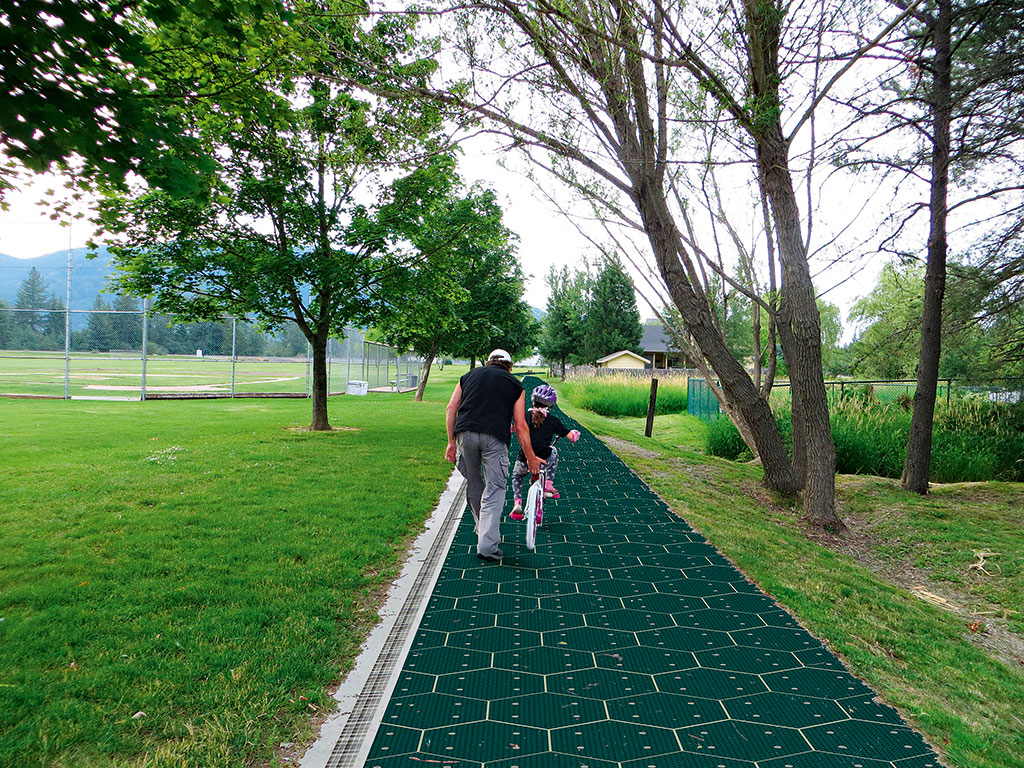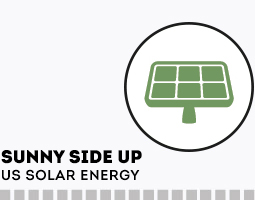Technology’s biggest flops (and why solar roadways are set to join them)
Solar panel highways are a novel idea but distract from what’s important – boosting solar efficiency – says Oscar Rousseau

An artist’s rendition of a solar-panelled bicycle path. The Solar Roadways idea is to replace crumbling asphalt roads with sophisticated solar panelling
Solar energy has immense potential. Every minute, enough of it hits the Earth’s surface to meet the world’s energy demand for a year. But there’s one problem: efficiently capturing sunlight and converting it into electricity has so far eluded the best and brightest photovoltaic experts. It was believed Solar Roadways, a start-up from Idaho, had found an ingenious way to solve the riddle. Global media hailed the idea as a ‘path to the future’: an assertion that, on face value, it was hard to refute.
The Solar Roadways idea is simple: replace crumbling asphalt roads with sophisticated solar panelling. These could cut greenhouse gas emissions by 75 percent, power neighbourhoods and electric cars, and create thousands of jobs. They offer a long-term source of sustainable energy: inventor Scott Brusaw claims a single mile of his roadways could generate enough electricity to power 428 homes. This technology sounds almost too good to be true… and a critical examination of the facts does the project no favours.
Ideas that flopped
If solar roadways fail to catch on, Brusaw can look to history for seemingly genius ideas that went from ‘great Scott’ to great flop.
The monowheel
The idea is simple: build a wheel big enough to accommodate a rider and an engine. The reality is a death trap. The one-wheeled vehicle – if it can be considered a mode of transport and not a Catherine wheel of doom – sprang up in a variety of designs from the 1860s until about the 1940s. Given the lack of balance and the driver being precariously exposed, it’s no wonder the monowheel never got into second gear.
Tanks in the sky
Flying tanks were a serious military concept before aircraft fitted with high-calibre weaponry came into use. Pursued by the Americans and Soviets in the 1930s, flying tanks failed to find their wings. US engineer John Christie claimed they would be a “greater guarantee of peace than all the treaties that human ingenuity can concoct”. Despite this, airborne tanks failed to stop the outbreak of the Second World War and were ditched soon after.
Wireless electricity
Serbian-American inventor Nikola Tesla dreamt of transferring electricity wirelessly to the masses. His Wardenclyffe Tower charged the air with electricity and, because air is a conductor, free electricity could theoretically travel for miles. But the idea was full of problems: one being that electrically-charged air is really dangerous. Tesla’s tower was shut down in 1917, along with his idea of transferring exposed electricity through the air.
For starters, the US would need $30trn – double its GDP – to replace its four million miles of road with the panels, according to an analyst from HowStuffWorks. Big question marks remain over the effectiveness of the network as solar panels convert less than quarter of sunlight’s energy into electricity. This inefficiency means photovoltaics are inferior to other energy sources such as oil, which only loses around 15 percent efficiency through refinement. Doubts have also been raised about the structural integrity of the roads, which will be made with glass. Brusaw claims the panels can withstand the heaviest American trucks (which weigh up to 250,000 pounds), but it’s unlikely solar panels could really withstand the punishment roads take year in, year out. Until these questions are answered convincingly, Solar Roadways will get nowhere. And the idea will not be seriously considered until it’s tested on a scale bigger than the inventor’s back garden.
Industry scepticism
Nonetheless, the project has captured the world’s imagination. In June, it made over $2m in crowdsourced funds from Indiegogo and is the site’s most popular campaign ever, with over 42,000 donations. A well-made YouTube video explaining the ‘Solar Freakin’ Roadways!’ boosted its popularity and has been watched 17 million times.
Brusaw deserves praise for a project full of ambition and creativity. His modular paving system is comprised of hexagonal cells made from recycled glass. The green-coloured tiles are 12ft by 12ft and can produce 7.6kW hours of power every day. The glass is super-strong and embedded with photovoltaic cells, some complex circuitry, and LEDs. The roads glow blue in the dark, spell out messages to alert drivers to hazards ahead, and even melt snow. Leftover liquid is funnelled into an underground storage tank before being sent to a water treatment centre.
So impressive is the idea that the US Department of Energy awarded the project $750,000 to build a prototype. It was the second batch of government funding awarded to Solar Roadways, whose proprietors were invited to the White House in July. Barack Obama’s administration is interested, but the photovoltaic industry is less than impressed. A source close to the industry says Solar Roadways is generally regarded as nothing more than a “distracting fad”. Scott Moskowitz from GTM Research agrees and also believes the public has a misconception that “solar power is expensive”.
“The [Solar Roadways] idea would be valid if solar, as it existed, had costs that prohibited installations,” says Moskowitz. “But with global installations expected to reach 40GW in 2014, it’s simply not the case. Solar Roadways may be a novel idea, but with relatively inexpensive solar power already available, Solar Roadways cannot compete.”
Moskowitz adds the idea would face competition in the green energy market as there is already technology in place that repurposes asphalt surfaces: solar carports. “These systems,” he says “have achieved 100-plus MW of installations in the US and costs have fallen year-on-year. Solar Roadways are more or less second to a party in which asphalt surfaces have already been repurposed into a competitive and renewable source of power.”
What we should be thinking about
The key issue is not the flaws in the idea, but that there is already infrastructure in place that is generating clean power. Improving the efficiency of existing solar panels is more important than investing in exciting but far-out schemes: only 14 percent of available sunlight is converted into electricity, according to Northwestern University. Instead of investing in the Solar Roadways idea, the smart thing would be to increase spending on proven photovoltaic technologies and boost their efficiency.
Solar panel installations were worth $13.7bn in the US last year and installation rates are predicted to grow 26 percent this year, according to the Solar Energy Industries Association. The organisation claims more solar panels were installed in the US in the last 18 months than in the previous 30 years. If this continues – which it is likely to do – there will be no need to invest in the expensive Solar Roadways: each of its panels costs $7,000 to manufacture, which is considerably less than existing photovoltaic technology.
After Solar Roadways more than doubled its fundraising target on Indiegogo this June, Brusaw published a statement online that said: “It seems like the world is gathering round our concept as a vote for a paradigm shift, where innovation and creativity are honoured rather than suppressed… Perhaps this will lead to a new scientific renaissance, and this time one that spans the entire globe.”
Solar Roadways has the potential to be an effective source of power, but the impetus to kick-start an international “scientific renaissance” is a tad ambitious. Crucially, what it lacks is support from the people that matter: scientists, engineers and business leaders. Its success is down to online popularity, which has had the knock-on effect of eliciting government interest. The innovative technology is a good idea, but it is unlikely to be anything more than that. High costs, inefficiency and doubts over structural integrity make the hopes of solar highways as far-out as Brusaw’s luminescent blue roads.














